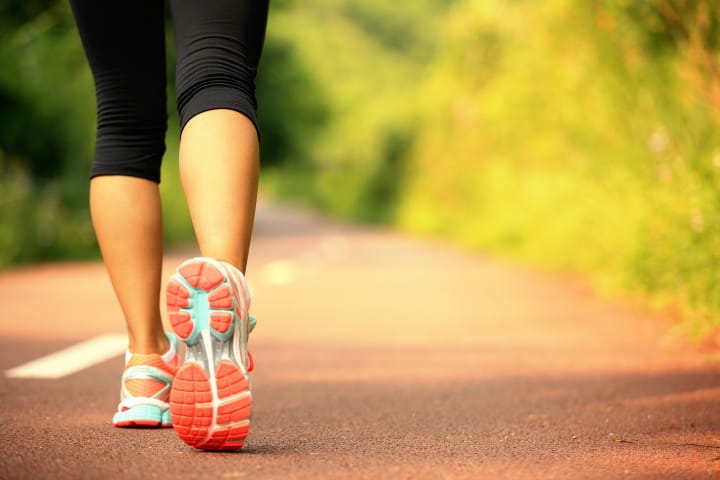Steps, steps, steps.
Got to collect those steps.
All day, you hummed your mantra to yourself as you parked in the very back of the Target parking lot. You watched the morning news on the treadmill. You walked the dog after dinner. You’ve been moving all day long trying to reach the golden number: 10,000 steps.
It’s really hard not to throw your FitBit at the end of the day when you realize you’re still about 1,000 steps short.
Before you start marching up and down the hall in your pajamas, it’s time to talk about the myth of 10,000 steps a day.
The truth is the 10,ooo steps a day we’ve been encouraged to get comes from a Japanese marketing campaign – NOT science. In the 1960s, a Japanese company marketed a pedometer called a manpo-kei, which translates to “10,000 step meter.”
The often-preached 10,000 steps a day was a slogan, not science.
If you want to reach the CDC recommended 150 minutes of moderate intensity exercise a week, you really only need 7000-8000 steps per day. If you’re doing that plus your twice weekly strength training (also part of CDC recommendations as well as my 4 Keys to Real Fitness) your body is going to feel better and you’ll see a host of benefits:
- Lowers risk of high blood pressure
- Lowers risk of stroke
- Improves aerobic fitness
- Improves mental health
- Improves cognitive function
- Reduces arthritis symptoms
- Prevents weight gain
Good news, right? Well, maybe. The physical activity guidelines are about improving health, not fat loss. If you want to lose weight you’re probably going to have to move more than what is recommended by the government. You will certainly have to look at your diet, which is the biggest piece of the puzzle when it comes to losing fat, building muscle and fitting into your favorite shorts again.
Lowering risk does not necessarily equal optimal health either. I am a huge believer in baby steps. I know that all movement matters. However, there is some science that suggests for the best chance at beating chronic illnesses like heart disease and diabetes we’re going to have to move more than 10,ooo steps a day.
Two recent studies looked at populations who move a lot more than the average adult. The first looked at the Tsimane tribe, a hunting and gathering population of indigenous people in Bolivia. They spend their days on the move, much as they have every day for hundreds, if not thousands, of years. For them heart disease is almost non-existent. While not entirely responsible for this phenomenon, their daily movement of 16,000 to 17,000 steps per day is a factor.
The other study might feela a little more relatable than a remote tribe living in the wilds near the Amazon. The other study looked at the health of people who walk for a living: mail carriers. A study in Scotland looked at postal workers who spent the day delivering the mail vs those who spent their days in more sedentary pursuits. The data found that the healthiest of the workers were the ones who walked at least 15,000 steps a day. They had normal BMIs and normal metabolic profiles with no heightened risk for heart disease.
Freaking out yet? Don’t. Let’s find the middle ground.
If you move even a little more, you will be healthier. The postal worker study found that any amount of walking or even standing up reduced the risk of heart disease. That means if you sit for hours at a desk without moving currently, adding in 5-10 minutes every hour of standing or walking will make a difference.
No one is expecting you to spend your whole day walking. You and I both have work to do that requires us to sit for a portion of our day. That doesn’t mean we can’t find ways to move more. Think about the usual advice (park farther away from the door, take the stairs, etc) but also get creative. Can you park at a central spot to run errands? Can you walk the kids to school or pick them up? Can you schedule more walking meetings?
You don’t start with 15,000 steps a day. You weren’t born into a hunting and gathering tribe. Your body may only be used to 2000 or 3000 steps a day. Don’t force it to go too much too soon or you risk injury or burn out. Focus on doing 1% better each day. You may never reach 15k steps a day but if you can get close to the mythical 10,000 steps a day (before bed please) you’re going to be okay.




